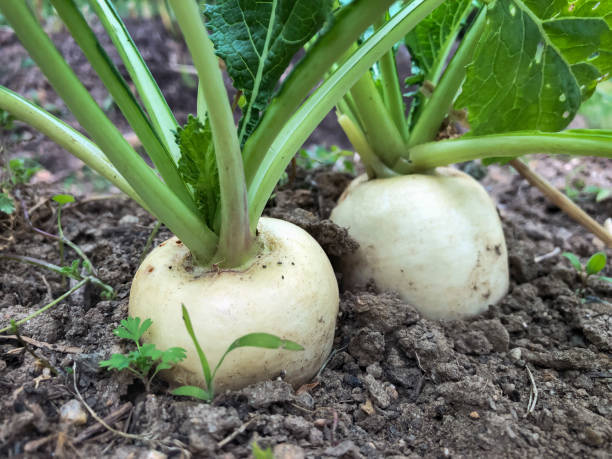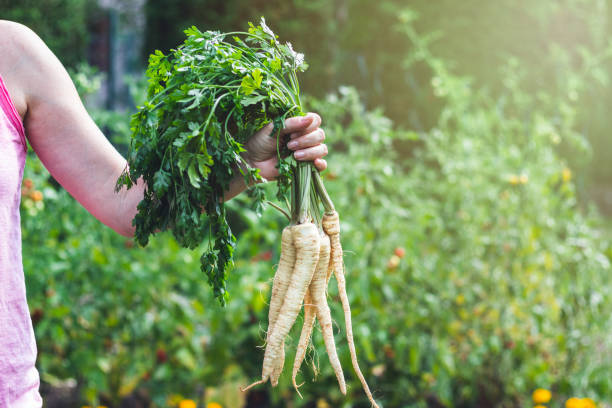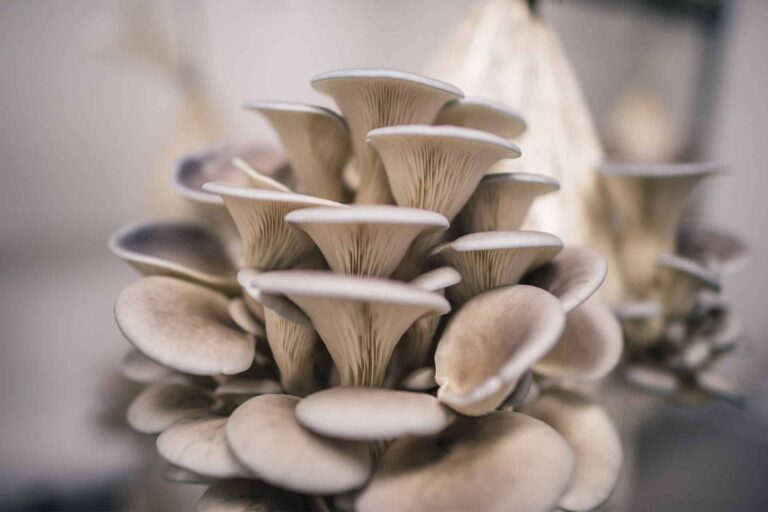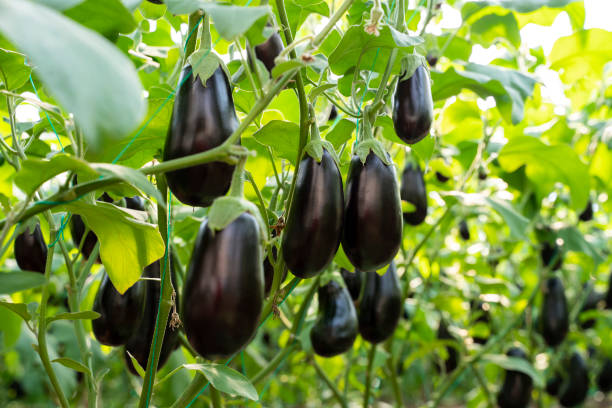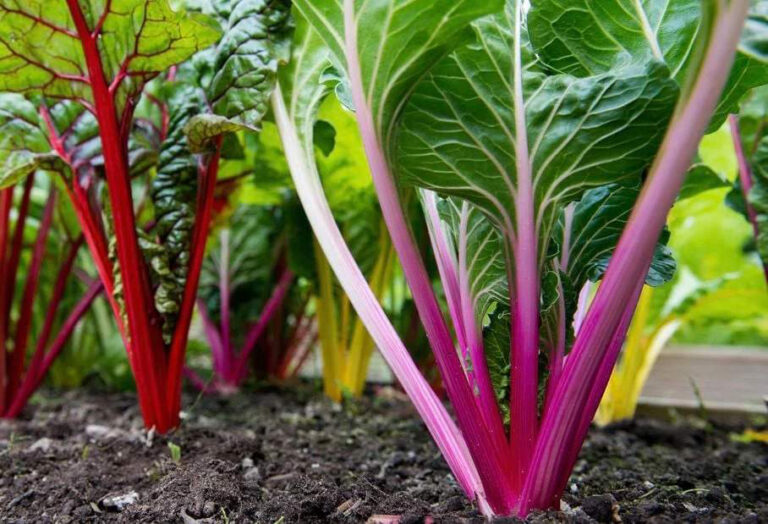How to Grow Turnips: A Simple Guide
Turnips are an easy and healthy vegetable to grow in your garden. Whether you’re new to gardening or already have some experience, turnips grow fast and are fun to harvest.
With just a bit of preparation and care, you can enjoy a plentiful harvest of these nutritious root vegetables.
This guide will show you step-by-step how to plant, care for, and pick your turnips, with extra tips to help you grow the best crop possible.
Why Grow Turnips?
Turnips are a great addition to your meals. You can eat the root cooked in soups, mashed like potatoes, or roasted.
Their leafy greens are also tasty, with a peppery flavor that’s great in salads or sautéed. Turnips grow quickly—some varieties are ready in just 30 to 60 days! They grow well in cooler weather, making them perfect for spring and fall gardens.
Additionally, they are versatile, low-maintenance, and can even improve your garden’s soil quality by loosening compacted areas and adding organic matter.
Getting Started
Choosing Your Turnip Variety
Here are some popular types of turnips to try:
- Purple Top White Globe: A classic with mild flavor and big roots, great for soups and roasts.
- Golden Ball: Sweet and tender yellow roots that add a splash of color to dishes.
- Tokyo Cross: Quick-growing and ready to harvest in as little as 30 days.
- Seven Top: Known for its tasty greens rather than its roots.
- Hakurei Turnips: Small, sweet, and delicate roots from Japan, often eaten raw or lightly cooked.
Picking the Right Spot
Turnips like soil that drains well and gets plenty of sunlight. They can handle a bit of shade, but more sunlight helps them grow better.
The soil should be loose and soft so the roots can grow big and straight. Avoid planting turnips in heavy clay soil, which can lead to misshapen roots.
Prepping the Soil
- Loosen the Dirt: Dig or till the soil about 12 inches deep to give roots room to grow.
- Clear the Area: Remove rocks, sticks, or anything that could block the roots or stunt growth.
- Add Compost: Mix in compost or well-rotted manure to make the soil rich and fluffy. This boosts nutrients and improves water retention.
- Check the pH: Use a soil test kit to make sure the pH is between 6.0 and 7.5. Adjust it with lime or sulfur if necessary.
Planting Turnips
Best Time to Plant
- Spring: Plant seeds 2-3 weeks before the last frost. Early planting helps them mature before hot weather sets in.
- Fall: Plant seeds in late summer or early fall so they grow in cooler weather. Fall turnips often develop a sweeter flavor due to cooler temperatures.
How to Plant Seeds
- Prepare the Area: Smooth out the soil and make shallow rows or scatter seeds across the bed.
- Plant the Seeds: Sow seeds about 1 inch apart in rows, or sprinkle them evenly if planting in a cluster.
- Cover Them Up: Lightly cover the seeds with about 1/2 inch of soil to protect them while allowing sunlight to reach them.
- Water Gently: Use a fine spray to moisten the soil without washing the seeds away.
Thinning the Seedlings
- Watch Them Grow: Seedlings will sprout in 7-10 days. Keep the soil consistently moist during this time.
- Thin Them Out: Once seedlings are 2-3 inches tall, thin them to about 3-4 inches apart so each plant has room to grow.
- Save the Greens: Use the thinned seedlings in salads or sauté them as a delicious addition to your meals.
Taking Care of Turnips
Watering
- Water Regularly: Turnips need about 1 inch of water each week. Keep the soil damp but not soggy.
- Mulch: Add a 2-3 inch layer of mulch around the plants to retain moisture and reduce weeds.
- Avoid Overwatering: Too much water can cause root rot. Ensure the soil drains well and only water when the top inch feels dry.
Feeding the Plants
- Use Balanced Fertilizer: If the plants need extra nutrients, use a low-nitrogen fertilizer to focus energy on root growth rather than just leaves.
- Compost Tea: Apply compost tea or organic liquid fertilizer every few weeks for a gentle nutrient boost.
Keeping Pests Away
- Flea Beetles: Protect young plants with row covers and sprinkle diatomaceous earth around the base.
- Aphids: Spray leaves with a mixture of water and a small amount of dish soap to get rid of aphids.
- Spacing Plants: Ensure proper spacing between plants to improve air circulation and reduce the risk of fungal diseases.
Harvesting Turnips
When to Harvest
- Check the Size: Harvest turnips when the roots are 2-3 inches in diameter. Larger roots may become tough and woody.
- Taste Test: Pull a test turnip to check if it’s tender and flavorful.
- Harvest Greens Early: Turnip greens are best when they’re small and tender, typically 4-6 inches long.
How to Harvest
- Loosen the Soil: Use a garden fork or small shovel to carefully loosen the dirt around the roots.
- Pull Gently: Grasp the base of the greens and pull the turnip upward.
- Trim Greens: If storing the roots, cut off the greens to prevent moisture loss.
Storing Your Turnips
- Short-Term: Store fresh turnips in the refrigerator in perforated plastic bags. They’ll stay fresh for up to 2 weeks.
- Long-Term: Keep turnips in a cool, dark, and humid place like a root cellar. Properly stored, they can last for several months.
- Preserve Greens: Blanch and freeze turnip greens to enjoy them later in soups or sautéed dishes.
Helpful Tips
- Rotate Crops: Don’t grow turnips in the same spot every year to avoid pest and disease build-up.
- Weed Regularly: Remove weeds to prevent them from competing with turnips for water and nutrients.
- Extend the Season: Use row covers or mulch to protect plants from frost and continue growing into the fall.
Why Grow Turnips?
Turnips are a gardener’s delight! These cool-weather crops are incredibly versatile, providing both flavorful roots and nutritious greens.
Whether roasted, mashed, or added to salads, turnips are a delicious and healthy addition to any meal. Beyond their culinary uses, turnips are also a fantastic choice for improving your garden’s soil.
They help break up compacted dirt, add organic material, and grow quickly, often maturing in just a few weeks. With the right care, you can enjoy a plentiful harvest and the satisfaction of growing your own food. Let’s get started on growing your best turnips yet!


